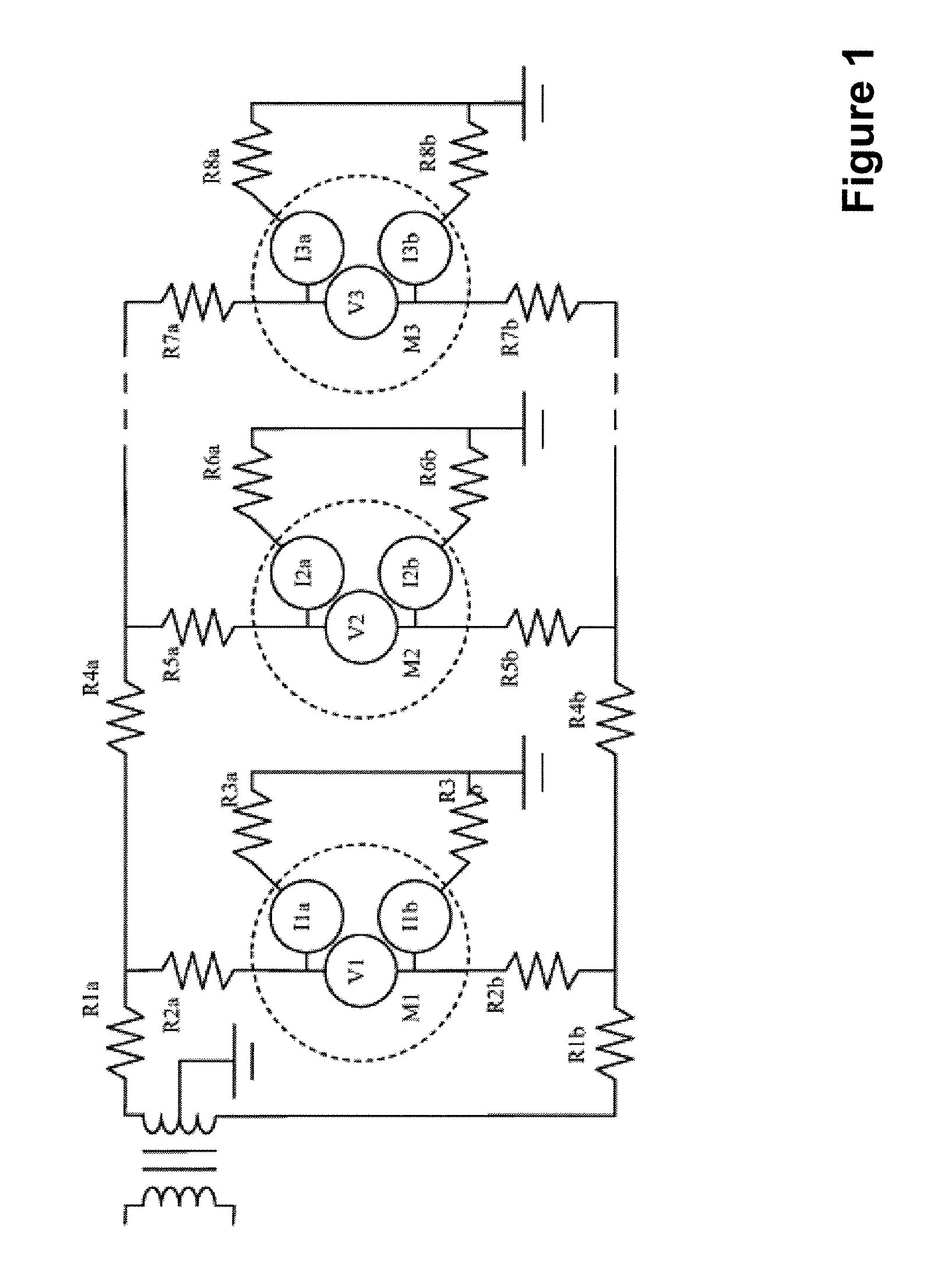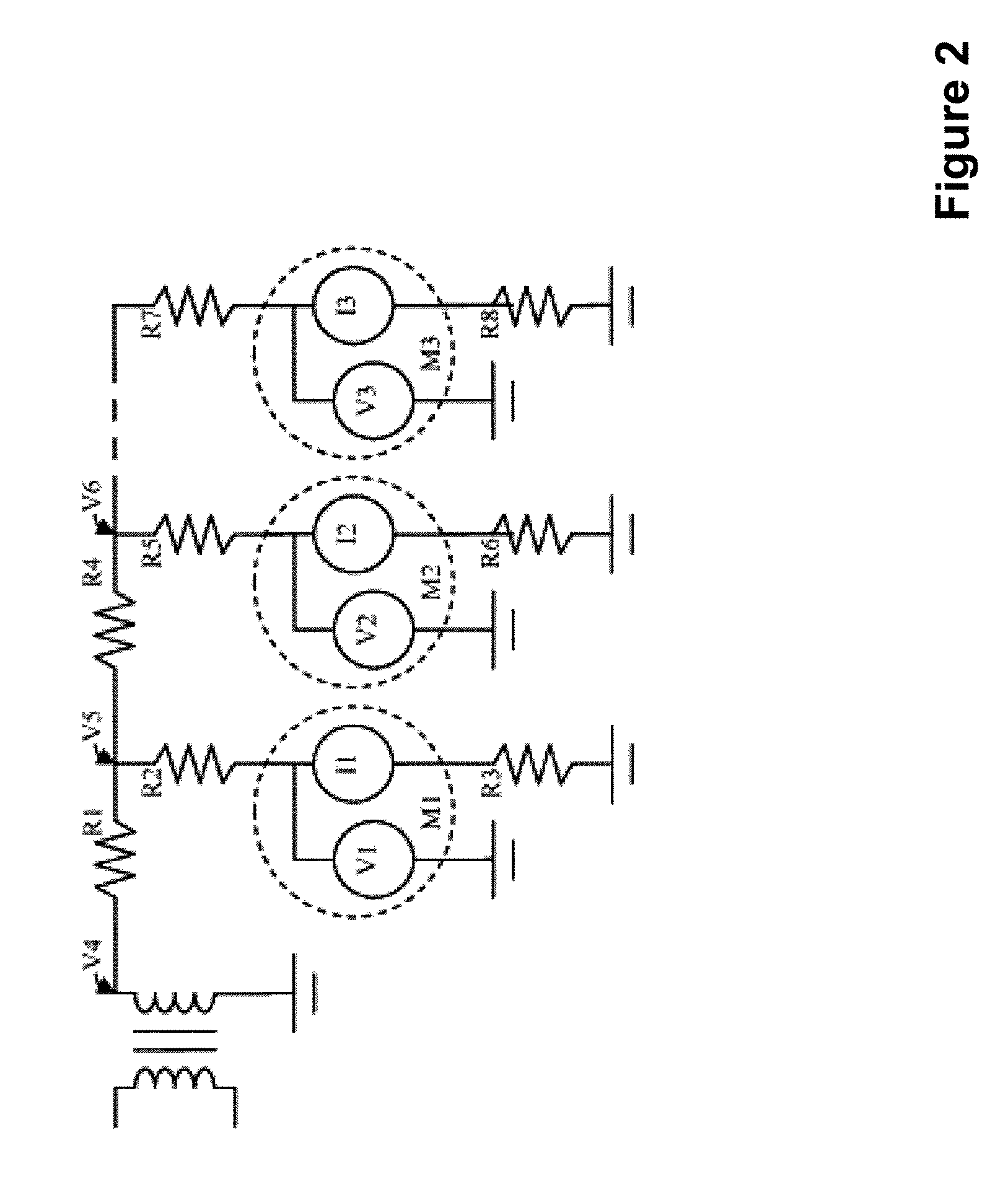Process for Detecting Energy Theft
a technology for detecting energy theft and energy theft, applied in the direction of electric devices, instruments, transportation and packaging, etc., can solve the problems of energy theft, affecting the life and property of people, and affecting the operation of electric utilities. billions of dollars annually
- Summary
- Abstract
- Description
- Claims
- Application Information
AI Technical Summary
Benefits of technology
Problems solved by technology
Method used
Image
Examples
Embodiment Construction
[0015]All terms used herein are intended to have their ordinary meaning in the art unless otherwise provided.
[0016]An exemplary embodiment allows for energy theft detection in a distribution circuit. Typically, a distribution circuit carries electricity from a transmission system and delivers it to consumer locations. The distribution circuits described herein typically comprise a transformer, which reduces distribution voltage to the relatively low voltages (e.g., 1 kV) required by lighting and interior wiring systems. The transformer may be pole-mounted or set on the ground in a protective enclosure. In any event, the transformer is in electrical communication with any number of consumer locations via, for example, an “electrical service” or “service drop” connection (e.g., and electrical wire). Each consumer location typically comprises a meter to determine the amount of electricity consumed at the location.
[0017]In one embodiment, the inventive methods require that at least two ...
PUM
 Login to View More
Login to View More Abstract
Description
Claims
Application Information
 Login to View More
Login to View More - R&D
- Intellectual Property
- Life Sciences
- Materials
- Tech Scout
- Unparalleled Data Quality
- Higher Quality Content
- 60% Fewer Hallucinations
Browse by: Latest US Patents, China's latest patents, Technical Efficacy Thesaurus, Application Domain, Technology Topic, Popular Technical Reports.
© 2025 PatSnap. All rights reserved.Legal|Privacy policy|Modern Slavery Act Transparency Statement|Sitemap|About US| Contact US: help@patsnap.com



